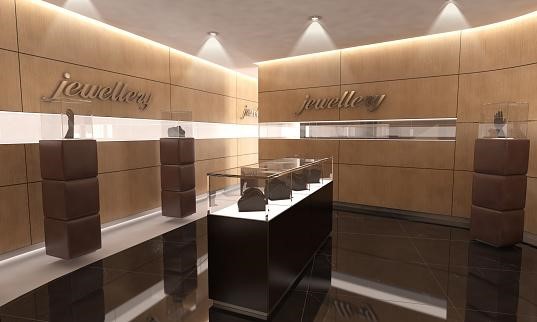Display boxes are an important consideration when planning the layout of a retail space or collection. These simple boxes can provide a great amount of utility, helping to showcase products while also protecting them from potentially damaging outside forces. However, not all display boxes are created equal. Many people that consider buying display boxes must choose between materials such as acrylic or glass.

It’s important to consider the features and the benefits of acrylic display boxes to ensure you purchase the ideal display box. To make a more informed decision, read on to discover why acrylic is the best material for display boxes.
Why Choose an Acrylic Display Box?
While glass was once the standard material for display boxes, acrylic is becoming an extremely popular material for display boxes. Acrylic has many attributes that make it ideal for displaying collectibles and other items.
[wbcr_snippet id=”738″]
Shatterproof – While acrylic can crack and fracture, it will never shatter dramatically like glass. This will not only protect the object on display, it will also protect bystanders and prevent a time-consuming clean up. Acrylic display boxes are also more impact resistant than glass display boxes of the same thickness, protecting them from damage in the first place.
Optically Pure – Acrylic can be manufactured to be clearer than glass. It is also free of the aforementioned green tint that glass has. This clarity allows the items on display to be viewed without distortion. Shadows and reflections will also be reduced when using acrylic display boxes, contributing a clearer viewing experience. If a spotlight is being utilized on a display box, this will contribute to a clearer viewing experience, and an acrylic display box is a necessity to minimize the reflection of light.
UV Resistant – Ultraviolet (UV) rays can cause damage to your products or memorabilia. This damage is often slow and occurs over time, so you may not notice it right away. Your display products may fade in color, crack, peel, or lose the appeal of the original look due to UV ray exposure. When you use an acrylic display box, you no longer have to be afraid to put your collectibles in the sunlight, such as at the front of a store window. An acrylic display case includes special UV filtering capabilities to prevent fading and premature aging of display items.
Lightweight – Acrylic display boxes are 50% lighter than glass display boxes. This makes hanging them or affixing them to walls much less hazardous than with glass. The lightweight nature of acrylic display boxes also makes setting up, moving, and taking down displays much simpler than with glass.
Cost Effective – Manufacturing clear acrylic display boxes is less complicated and expensive than manufacturing glass regarding both labor and materials. As well, acrylic display boxes are less expensive to ship due to their low weight.
Insulating – For specific storage conditions, the insulating properties of acrylic display boxes should not be overlooked. It will keep the object inside less susceptible to the effects of the cold and heat.
Smaller Environmental Impact – Acrylic tends to require less energy to produce and weighs less to transport; therefore, it has a smaller environmental impact. Acrylic is versatile and can be reused. It’s also possible to recycle acrylic if you decide you no longer need to use it.
Common Questions About Acrylic Display Boxes
Can UV pass through acrylic?
Most acrylic plastics do not allow UV-C wavelengths (100–290 nm) to pass through. So when you use an acrylic display box to display your products or memorabilia, you can trust that you are protecting your products or display items from yellowing, fading, or brittling.
How thick should acrylic be for a display case?
For light display items, a 3-millimeter-thick acrylic sheet is sufficient. If you’d like to place heavier items in your acrylic display box, then it’s recommended to choose a sheet from 5 to 6 millimeters thick.
How strong is an acrylic box?
Acrylic is up to seventeen times more impact resistant than a sheet of glass that’s the same size, shape, and thickness. This means that even if your acrylic display case is knocked over or hit with a projectile, it may not break – and that certainly means it can sustain typical wear and tear.
What types of products are best for acrylic display boxes?
You can use an acrylic display box for a variety of products or items. Some of the most popular uses are for decorative pieces, merchandise, jewelry, breakables, edible foods, clothing, brochures, and more. Acrylic display boxes are versatile for usage in a commercial, retail, or a home setting to optimize displaying your items safely. Effective usage of acrylic display boxes may even boost retail sales!
Where are acrylic boxes mostly used?
Retailers use locking acrylic boxes to protect their high-value items from theft, museums use UV-resistant acrylic boxes to protect fragile items from pollutants and UV degradation, and sports collectors use acrylic boxes to protect autograph memorabilia from dust. Acrylic boxes are also ideal for showcasing turntables, model planes, model boats, sculptures, and other collectibles while protecting them from debris.
[wbcr_html_snippet id=”3328″]
Conclusion
Acrylic provides an excellent way to present products and objects while protecting them from outside forces. In the end, acrylic display boxes will likely be the superior material for display boxes. It can protect collectibles from UV light, and provides even greater optical clarity than glass. Best of all, it will not cause a safety hazard if dropped or broken.
Interested in purchasing an acrylic display box for your retail or collection space? Take a look at our display boxes and cases offering page, or contact an expert today.

